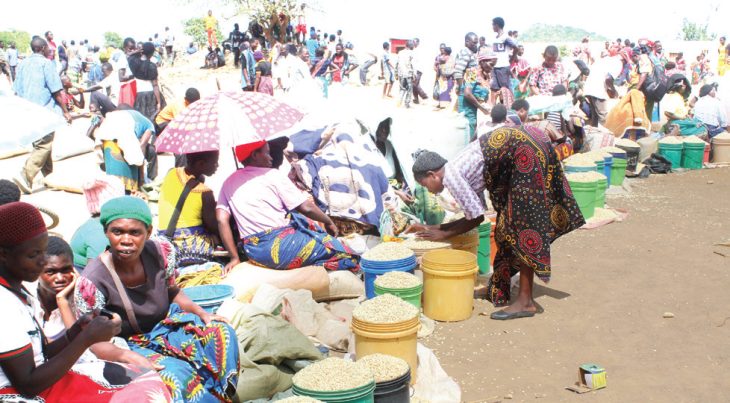
Stabilizing Maize Prices: A Catalyst for Malawi’s Economic Growth
Key Business Points
- Maize price volatility is a significant concern for Malawi’s business community, with prices expected to rise in the lean season unless market interventions are introduced.
- Policy interventions such as strengthening Admarc’s capacity to stabilize prices, supporting farmer productivity, and improving cross-border trade facilitation are recommended to mitigate price volatility.
- Investment in early warning systems and market intelligence platforms can help producers and consumers make informed decisions, ultimately contributing to economic stability and reducing food insecurity.
The Malawi Confederation of Chambers of Commerce and Industry (MCCCI) has warned that unless significant market interventions are introduced, maize prices are likely to remain elevated in the lean season. This could worsen food insecurity and undermine economic stability for both rural households and agribusinesses. Maize is a critical component of the consumer price index, accounting for about 53.7 percent of the aggregate basket for computing inflation. Any movement in the price of maize can have a significant bearing on the cost of food, making it a crucial factor for businesses and consumers alike.
According to data compiled by the International Food Policy Research Institute (Ifpri), the national average price of maize rose by 48 percent year-on-year, from K880 per kilogramme in January 2024 to K1 304 per kilogramme in January 2025. The price surge was even more pronounced in February, rising by 123 percent from K771 per kilogramme in 2024 to K1 718 per kilogramme in 2025. Although prices declined in the last week of March and April 2025 following the onset of the harvest season, they remained significantly higher than in 2024.
The high maize prices have significantly eroded purchasing power, particularly affecting the urban poor and rural households that depend on market purchases. On the other hand, producers benefited from higher prices, especially those who were able to harvest early or had surplus stocks. However, input costs, including fertilizer, transport, and storage, remained high, limiting profit margins for many smallholder farmers. As the MCCCI noted, "For consumers, the high maize prices significantly eroded purchasing power… On the other hand, producers benefited from higher prices, especially those who were able to harvest early or had surplus stocks."
To address the issue, the Minister of Agriculture, Irrigation and Water Development, Roza Fatchi Mbilizi, announced that the government would import 200 000 metric tonnes of maize from Zambia, enabling the government to sell the maize at less than K50 000 per 50 kilogramme bag locally. This move is expected to stabilize maize prices and make the grain more affordable for Malawians. As Mbilizi said, "So, we are saying, as government, we will make sure that Malawians buy this maize at a very affordable price." This development is a welcome move for businesses and consumers, who can look forward to more stable maize prices and reduced food insecurity. As the Chichewa phrase "Tsiku lolipira ndi mphete" (a good day is determined by the harvest) suggests, a stable food supply is essential for the well-being of Malawian households and businesses.
What are your thoughts on this business development? Share your insights and remember to follow us on Facebook and Twitter for the latest Malawi business news and opportunities. Visit us daily for comprehensive coverage of Malawi’s business landscape.
- Stabilizing Maize Prices: A Catalyst for Malawi’s Economic Growth - October 25, 2025
- Fueling Malawi’s Trade Rise: How Digital Payments Are Supercharging SME Exports - October 25, 2025
- Harvesting Prosperity: Navigating Malawi’s Tobacco Industry Upswing - October 25, 2025
